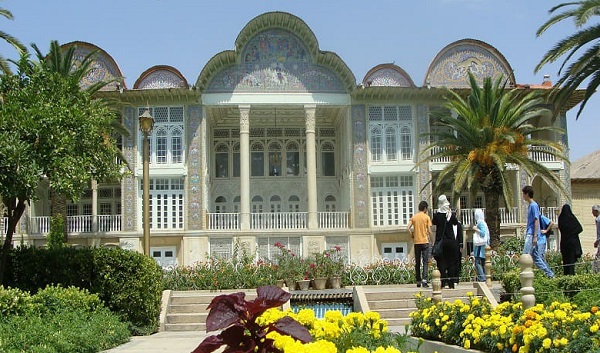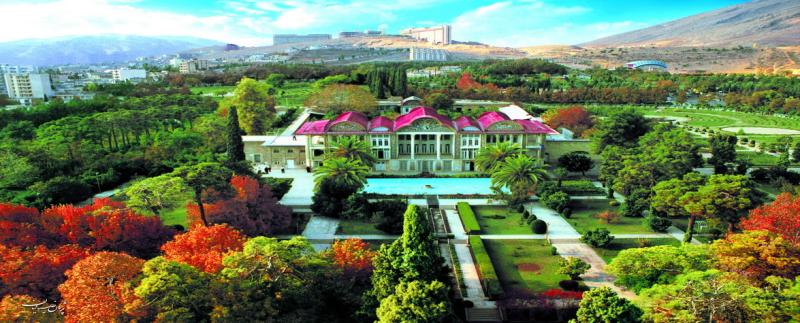One of the oldest Persian gardens built some 900 years ago and it has been admired ever since. The garden is a famous and beautiful garden at Shiraz. Its site close to the embankment of the Roudkhan-ye Khoshk was formerly on the northwestern fringe of the city but is now well inside the greatly expanded urban area. The present garden and mansion are not very old but, like the other famous gardens of Shiraz, may well have replaced an earlier foundation.
When Zand dynasty went into extinction and Qajars got the political power, the garden became one of the bases of Qashqai tribe and “Jani Khan” the lord of the Qashqais at the time, ordered the current mansion to be built in the garden. During Pahlavis the garden became a state property and finally was given to Shiraz University to be used as the Botany Department of the university. It was registered as a national heritage in 1974 and a UNESCO world heritage in 2011.
read more >> Hafez’s tomb

The main water source of the garden is “Nahr-e Azam” Qanat which has been one of the main water sources to irrigate gardens of Shiraz over the past centuries.
There are six inscriptions in the garden which are almost unique in the entire Iranian architecture. These stone inscriptions contain information about the garden presented in the form of poetry. On two of these inscription stones, for instance, you will see poems by Shoorideh Shirazi. The inscriptions contain information like the date of building the garden, the person who built it, and the king in whose time the garden was built. The main purpose of these inscriptions is to record the gradual process of building and then repairing the garden.
Another interesting thing about the inscriptions is the bas relief of the Achaemenid soldier. It is on the third inscription stone. The purpose of this design is to give the garden an air of ancient Persian culture. Overall, these inscriptions are unique in terms of design and purpose, even though you may find similar works from hundreds of years ago still erected here and there in Iran.
The front porch of the central porch and its surroundings are one of the most interesting tilework of the Qajar period. It is not seen in other buildings of the same period. In Qavam al-Maliki divan or the other interior decorations of the Qajar period, you can’t find anything such as the front porch inscriptions of Eram Garden. It is truly unique.
The ground floor has a main hall in the middle. People know this hall as “Hozkhane”. On the two sides of Hozkhane, there are two corridors. At the end of both corridors, there are staircases. On either side of the corridors are two large halls. Adjacent to the south side of the kitchen is a large kitchen.
The second floor of the mansion has two tall pillars in the middle of a large veranda. Behind this porch, there is a large hall. On either side of it, there are two corridors with two Gooshvars over the top and Chahartaq (four arches) are on both sides of the corridors. On each side of the large porch are two small porches to the east, behind which are sashes. Each porch has two small integrated stone pillars. Also, in the north and south end of the mansion, there are two corridors.

Address:
Eram Blv. Shiraz
Visiting Hours: 08:00 – 20:30 (Spring & Summer) , 08:00 – 18:30 (Autumn & Winter)
Note: The garden is closed during some religious holidays like “Tasooa”, “Ashoora” and the death of the Prophet Mohammad.